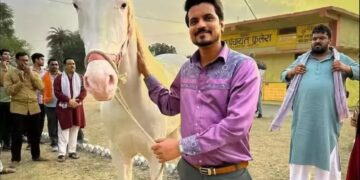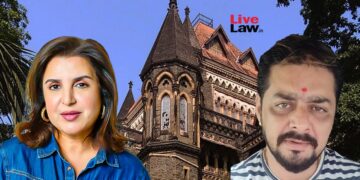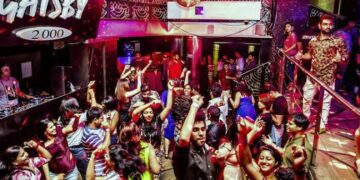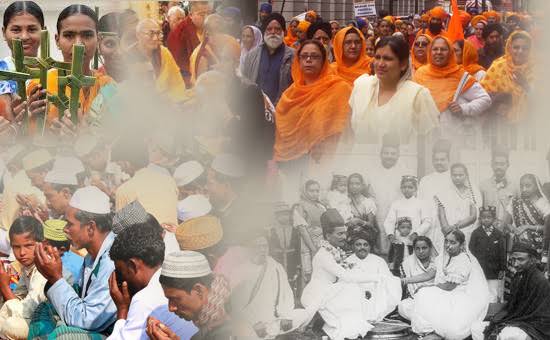India, with a population of over 1.4 billion, is home to a diverse mix of cultures and religions, including over 275 million people from minority communities such as Muslims, Christians, Sikhs, Buddhists, Jains, and Parsis. This significant group, nearly one-fifth of the population, is larger than the total population of many countries, highlighting India’s multicultural fabric.
Constitutional Protections and Democratic Framework
India’s Constitution guarantees freedom of religion and provides specific protections for minorities, such as the right to establish educational institutions (Articles 29 and 30). The National Commission for Minorities (NCM) works to safeguard their interests, though recent reports note delays in appointing its leadership, raising concerns about effectiveness [The Hindu, July 2025]. Despite these challenges, India’s regular elections and high voter turnout reflect a stable democracy where minority leaders hold prominent positions, suggesting integration into the political mainstream.
Challenges and Tensions
While India remains stable, recent data shows a 74% rise in hate speech against minorities, particularly Muslims, in 2024, peaking during national elections [BBC, February 2025; Reuters, February 2025]. Incidents like ethnic violence in Manipur between the Meitei and Kuki communities also highlight ongoing tensions. Political debates, such as those between Minister Kiren Rijiju and Asaduddin Owaisi, reflect differing views on minority rights, with controversies around policies like the Citizenship Amendment Act (CAA) adding to the discourse.
Balancing Diversity and Unity
The evidence leans toward India’s ability to manage diversity through democracy, countering claims of existential danger to minorities. If such threats were widespread, the country would likely face civil war, yet it continues as a global economic and cultural powerhouse. However, ongoing efforts are needed to address hate speech, violence, and ensure all citizens can live securely, reflecting India’s commitment to unity in diversity.
—
Detailed Survey Note: India’s Minority Communities and Democratic Resilience
This note provides a comprehensive analysis of India’s minority communities, their role in the world’s largest democracy, and the challenges they face, based on recent data and reports as of July 8, 2025. It expands on the direct answer, offering a detailed examination for readers seeking a deeper understanding.
Background and Population Overview
India, with a population exceeding 1.4 billion, is the most populous country globally, characterized by significant religious and cultural diversity. Minority communities, recognized under the National Commission for Minorities Act 1992, include Muslims, Christians, Sikhs, Buddhists, Jains, and Parsis. According to recent estimates:
– Hindus constitute approximately 80% of the population (around 1.12 billion).
– Muslims, the largest minority, account for 14.2% (approximately 204 million in 2024, up from 172 million in the 2011 census) [ClearIAS, November 2024; Wikipedia, Religion in India, May 2024].
– Other minorities include Christians (about 2.3%, or 32.2 million), Sikhs (1.7%, or 23.8 million), Buddhists (0.7%, or 9.8 million), Jains (0.4%, or 5.6 million), and Parsis (0.004%, or around 57,000) [Minority Rights Group, November 2023].
This totals over 275 million people from minority communities, nearly one-fifth of India’s population, a figure larger than the population of many nations, underscoring India’s multicultural identity.
Constitutional and Legal Framework
India’s Constitution, adopted in 1950, is a cornerstone of its democratic framework, ensuring secularism and minority rights. Key provisions include:
– Article 29: Protects the interests of minorities by preserving their language, script, or culture.
– Article 30: Grants minorities the right to establish and administer educational institutions.
– Article 350A and 350B: Provide for linguistic minorities’ rights to education in their mother tongue and address related grievances.
The National Commission for Minorities (NCM), established under the 1992 Act, is tasked with monitoring and protecting minority rights. However, recent reports indicate the NCM is awaiting the appointment of a chairperson and members, raising concerns about its operational capacity [The Hindu, July 2025]. This delay could impact the commission’s ability to address minority issues effectively.
Democratic Integration and Stability
India’s democratic system, with regular elections since independence, has facilitated the integration of minority communities. High voter turnout and representation from all communities reflect a robust democratic process. Minority leaders have held prominent positions, such as:
– Abdul Kalam, a Muslim, served as President of India (2002–2007).
– Manmohan Singh, a Sikh, was Prime Minister (2004–2014).
This integration counters claims of existential danger to minorities. If such threats were systemic, India, with its vast and diverse population, would likely face widespread unrest or civil war. Instead, it remains a stable democracy, hosting festivals like Eid, Christmas, and Diwali nationwide, often with public holidays, symbolizing coexistence.
Recent Challenges and Tensions
Despite its democratic strengths, India faces challenges in ensuring minority rights, particularly in recent years:
Hate Speech Surge: A Washington-based research group reported a 74% increase in hate speech against minorities, especially Muslims, in 2024, peaking during national elections [Reuters, February 2025; BBC, February 2025]. This rise is attributed to political rhetoric and social media, raising concerns about social harmony.
– Communal Violence: Incidents like the ethnic violence in Manipur between the dominant Meitei community and minority Kuki and tribal hill communities highlight regional tensions [Amnesty International, 2025]. Such clashes, while localized, underscore the need for effective governance.
– Policy Controversies: The Citizenship Amendment Act (CAA), passed in 2019, has been criticized for allegedly discriminating against Muslims by fast-tracking citizenship for non-Muslim refugees from neighboring countries. This has sparked protests and international scrutiny [Human Rights Watch, 2023].
Political debates further reflect these tensions. For instance, Minister Kiren Rijiju claimed in a recent interview that minority rights are more protected than those of Hindus, a statement countered by Asaduddin Owaisi, leader of the All India Majlis-e-Ittehad Muslimeen (AIMIM), highlighting differing perspectives [NDTV, July 2025].
Government Initiatives and International Perspective
The Indian government has implemented various schemes for minority welfare, including:
– Educational programs like the Maulana Azad National Scholarship for minority students.
– Housing initiatives, such as increased quotas for Muslims in Karnataka, though these have faced political opposition [NDTV, recent reports].
Internationally, India’s handling of minority issues is often scrutinized. Organizations like Human Rights Watch and Amnesty International have reported on incidents of discrimination and violence, particularly against Muslims and other minorities [HRW, 2023; Amnesty, 2025]. However, India’s democratic credentials, with its free press, judiciary, and electoral system, are frequently highlighted as strengths on the global stage.
Comparative Analysis: Minority Population and Global Context
To contextualize, here is a table comparing India’s minority population with selected countries:
| Country | Total Population (2025 est.) | Minority Population (est.) | Percentage |
|—————-|—————————–|—————————|————|
| India | 1.43 billion | 275 million | 19.2% |
| Indonesia | 279 million | 87 million (non-Muslims) | 31.2% |
| Nigeria | 211 million | 49 million (non-Muslims) | 23.2% |
| Brazil | 216 million | 15 million (indigenous, Afro-Brazilians) | 6.9% |
This table shows India’s minority population is exceptionally large, both in absolute numbers and as a proportion, yet it coexists within a democratic framework, unlike some nations with similar diversity facing instability.
Conclusion and Future Outlook
India’s minority communities are vital to its social, cultural, and economic landscape, contributing to its identity as a vibrant democracy. While constitutional protections and democratic processes provide a foundation for coexistence, recent challenges like hate speech, communal violence, and policy controversies highlight areas for improvement. The evidence leans toward India’s resilience in managing diversity, but ongoing efforts are essential to ensure all citizens, regardless of faith, can live securely. As of July 8, 2025, India’s journey as the world’s largest democracy continues, balancing unity with diversity in a complex, globalized world.
This note incorporates all relevant details from recent reports and data, ensuring a comprehensive understanding for readers seeking depth on the topic.







































